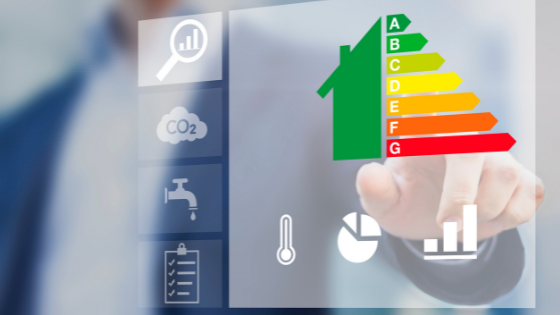This is a sneak peek of a research carried out by Buildings Performance Institute Europe (BPIE) in 2012, consisting of a survey template covering legal, financial, and technical information on the energy performance of buildings sent out to countries. BPIE’s mission is exactly this: improving the energy performance of Europe’s buildings, and significantly reduce greenhouse gas emissions associated with building energy use.
Energy Performance of Buildings, Country by Country
The countries that participated in the research were EU 27, Norway and Switzerland.
The buildings covered for this study were single and multi-family houses, offices, educational buildings, hospitals, hotels and restaurants, sport facilities and wholesale and retail trade buildings.
To begin with, the 5 most populated countries in the continent are Germany, France, United Kingdom, Italy, and Spain. These account for 65% of the total floor space, which is 24 billion square meters for the EU 27.
The floor area distribution is divided into residential (75%) and non-residential (25%). Regarding residential floor area, there is a wide range of single and multi family houses (64% of floor area distribution), really popular in Greece, Ireland, Norway, and the UK. Apartments and blocks are more common in Estonia, Latvia, and Spain (36% of floor area distribution).
On the other hand, non-residential floor area consists on wholesale and retail buildings (28%), offices (23%), educational buildings (17%), hotels and restaurants (11%), hospitals (7%), sport facilities (4%) and other (11%).The heating and cooling conditions of both wholesale and retail buildings differ substantially from other categories because they are normally used for storage purposes. Offices and educational buildings, however, have similar heating and cooling conditions to residential buildings. Finally, hospitals and sport facilities have continuous usage patterns that varies depending on the level of service provided.
Let’s Dig into the Energy Performance of Europe’s Buildings
It is widely recognized that the building sector is one of the key consumers of energy in Europe. The energy consumption in buildings in EU27, Norway, and Switzerland since the 1990s is made up of 2 trends: a 50% increase in electricity and gas use and a decrease in use of oil and solid fuels by 27% and 75%, respectively.
Overall, the energy use in buildings is a rising trend with an increase from around 400 Mtoe to 450 Mtoe over the last 20 years (1 Megatoe = 11,630 million MWh). This is likely to continue if insufficient action is taken to improve the performance of buildings.
- Residential buildings comprise the biggest segment of the EU’s building stock and are responsible for the majority of the sector’s energy consumption (68%).
Specifically, energy in households is mainly consumed by heating, cooling, hot water, cooking, and appliances. We also know as a matter of fact that space heating is the most energy intense end-use in EU homes and accounts for around 70% of our total final energy use.
In terms of types of energy, while gas is the most common fuel in North and West Europe, the highest use of coal is found in the Central and Eastern Europe, like Poland, and oil is most popular in South Europe, like Spain.
- Energy use in the non-residential sector is complex as end-uses -such as lighting, ventilation, refrigeration, IT equipment- vary greatly from one building category to another. Over the last 20 years in Europe, electricity consumption in non-residential buildings has increased by a remarkable 74%. This is explained with technological advances over the decades. However, there has been a shift from oil and solid fuels towards gas. Electricity stands for 48% of the energy in this sector and gas, 29%. Non-residential average energy consumption was estimated at 280 kWh per square meter -covering all end-uses- being 40% larger than the equivalent value for the residential sector. Energy consumption shares for different types of buildings are the following: offices, wholesale and retail buildings account for over 50% of energy use. On the other hand, hospitals, hotels, and restaurants represent a relatively small share of the overall consumption (around 28%). Finally, the other 24% refers to education and sport facilities.



